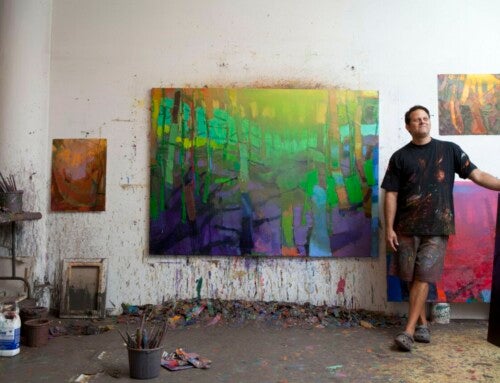
For Barry Coyle ’86, the bad thing about biology is you have to memorize a lot of stuff. The same thing goes for chemistry. When Coyle was taking those classes his freshman year at the College, he couldn’t get much better than a C. He started thinking maybe he should find a new branch of science, one where you can apply models or methods, and perhaps then his grades and study habits would improve.
His salvation was ultimately a combination of physics, astronomy and math, and he took particular delight working in a small lab on campus. There, under the guidance of Professor Fred Watts, Coyle got his first taste of atomic physics and the device that would come to dominate his professional life: the laser. His love of lasers was so strong, in fact, Coyle switched his major from astronomy to physics his senior year.

“Barry was very bright and hard-working, and that’s what you want to see in a student,” Watts says. “He was very interested in lasers – how they work and what you could do with them.”
Turns out, Coyle has discovered there is a lot you can do with lasers. Now a NASA laser physicist at the Goddard Space Flight Center in Greenbelt, Md., Coyle develops new laser sources for all sorts of aerial and spaceflight applications for Earth and planetary remote sensing. One of his triumphs is the construction of pulse laser designs used to measure the volume of biomass from the air and, ultimately, the Earth’s orbit. Scientists can then analyze the millions of reflected laser pulses to determine the height of old growth forests, rainforest foliage density, subsurface volcanic activity or the height of ice sheets.
Such measurements of carbon dioxide–absorbing vegetation are of increasing importance because of the ramifications of climate change. By measuring the global biomass for two or more years, climatologists can see the Earth breathe as the hemispheres go through full cycles of seasons. And, Coyle says, it sure beats the alternative method: sending graduate students into the woods with tape measures, binoculars and calculators to measure the amount of sunlight reaching the ground.
To his core, Coyle believes that with a physics degree, “one can do anything.”
As proof of this point, consider the other items in Coyle’s bag of tricks. For example, he built the laser that hit NASA’s Messenger probe, which was 15 million miles away, passing by Earth in 2005 on its way to Mercury.
“That distance,” Coyle says, “is a world record for an active optical laser link, although it’s not like someone is trying to do this every other weekend – more like once in a career.”
Something more common in his career is lasers that can help track orbiting space debris, which has become a problem that is continually worsening with every rocket launch and dead satellite that doesn’t burn up in the Earth’s atmosphere. Since space debris poses severe threats to astronauts, the International Space Station and hundreds of operating satellites, accurate predictions of their orbits could save both human lives and expensive technology. Remember, the average impact velocity of two items in Earth’s orbit is greater than 22,000 miles per hour.
Perhaps most intriguing, though, is Coyle’s participation in tractor beam research, led by a colleague at NASA. That’s right, tractor beams, which, as portrayed in the movies, allow hovering UFOs to suck up hapless humans or grazing cows. But right now in the real world, tractor beams only work on the micron scale, allowing scientists to focus a laser on cells in a petri dish and move them around in three dimensions, which is still pretty exciting.
In time, Coyle and his colleagues hope to make a beam that can move larger bits of mass. Such a device might be put into space to fly alongside a comet or asteroid, operating as a touch-free system of pulling samples, and allow NASA to forgo complicated and expensive robotics that can be prone to mechanical malfunctions.
Sounds interesting, but when can we use tractor beams to suck up people?
“You may eventually move a person, but you’d vaporize them in the process,” Coyle laughs. “That’s a minor issue we’re running up against.”
OK, so there are still a few quirks to work out. That’s fine with Coyle. Vaporization, at least in his world, is still preferable to memorization.
– Jason Ryan



